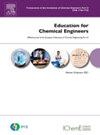Instructors teaching chemical engineering topics have traditionally used graphical methods to explain core concepts and design unit operations. However, with the shift towards online and blended/flexible learning, there is a need to adapt these graphical methods for online use. This paper presents a set of interactive graphs that can be used for fluid flow, separation process, and reaction process unit operations and aims to investigate students' opinions of the interactive graphs and their motivations for using them in their studies. The digital resource developed in the paper is a set of slim single-page applications written in HTML5 & CSS3 with the numerical calculations undertaken in JavaScript (JS). The interactive graphs are embedded into the virtual learning environment (VLE) system Blackboard for two courses, and a paper survey is used to measure students' perceptions towards the interactive graphs and their use of them. The UTAUT2 model is used to analyse the student use of these resources. It is demonstrated that the use of online interactive graphs is popular with the students and the main driving factors are the performance expectancy and the hedonic motivation. Short scaffold questions to help students interact with the graphs are key to their usefulness. Some guidance on the use of interactive graphs is also provided. The interactive graphical resource can be found and used at the Graphical Chemical Engineering Design weblink: https://www.ce.manchester.ac.uk/gced.


